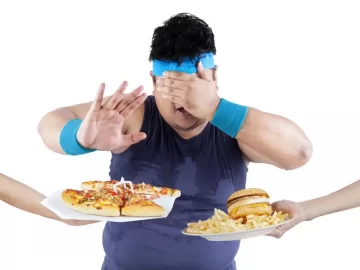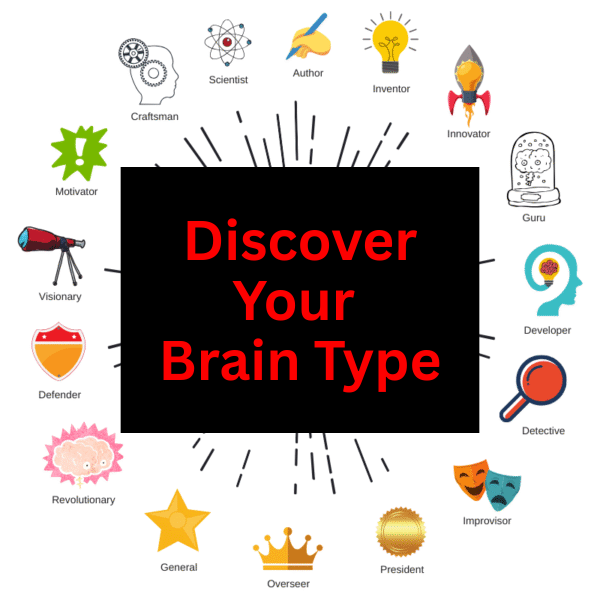 You’ve all heard of willpower. This is the energy you use when you DO something
You’ve all heard of willpower. This is the energy you use when you DO something
But have you heard of “Won’t power?” This is the energy you use to NOT do something
Both use energy from the same part of the brain – the prefrontal cortex (PFC), which is the part of your brain that gives you the ability to delay gratification, make good decisions, have rational thoughts, simulate scenarios to predict their outcomes, etc.
The PFC is also called the “parent brain” because it thinks things through as a logical adult would with life experience.
The rest of the brain (most of the brain) is called the “toddler brain” because it operates mostly on instant gratification, emotions, feelings, etc.
The energy required for both WILL and WON’T power comes from the PFC, which can get tired toward the end of the day or due to stress, emotions, etc.
The toddler, on the other hand, never gets tired.
But it can be trained by the parent brain!
This training takes place over time, but here are some hacks and shortcuts to reduce that time (and effort) drastically.
- Flex your “won’t muscle.” Find things that are tempting, but easy to resist. Then place them in your daily path where you can say no to them often. One example might be to consciously NOT look at your phone EVERY time a notification pops up. Maybe look at it every other time instead. Each time you say no is a “rep,” just like lifting a weight. The more you get to say no to the easy things now, the better you get at saying no to harder things later.
- Make recurring bad habits harder to do. The toddler brain is lazy, so if you place those Pringles in the garage, you are creating an obstacle that makes it a little bit harder to perform that habit. Plus, it takes more time, which lets the parent brain weigh in on the topic, and also takes the “automatic” nature out of it.
- Ignore the toddler and eventually, like any other annoying toddler, he/she will go away. Neural networks atrophy with disuse. Thinking about a bad habit, craving, etc., activates the same neural pathway as doing it. Every action starts with a thought, so catch yourself in the thought and stop it there by switching that thought to what you SHOULD do that would be better than the temptation of what you know you SHOULDN’T do. If you are thinking about what you SHOULD do, you are necessarily NOT thinking about what you SHOULDN’T do because the brain can’t entertain opposing thoughts simultaneously. This exercise strengthens your DO pathways, making them stronger, and atrophies your SHOULDN’T pathways, making them weaker.
- Meditation and/or breathing exercises can replenish some energy back into your PFC. And it doesn’t take much. Just a few minutes can be enough. Sitting quietly, slowing your breath, and noticing how your breath feels in your nose, or how your stomach is moving with each breath can be enough.
Lastly (for now), here is a tip for the parent brain: Use “Triggers” to reduce the energy your PFC has to spend. Overcoming inertia takes lots of energy, but momentum saves energy. The first action step of something is usually the hardest, even if it’s an easy step. A good example of a trigger is setting some ingredients out on the counter before you leave for work, that you will be needing to prepare dinner when you get home. Then your brain sees the process as already started, which helps your parent brain do it, even though it’s tired after a hard day at work. Plus, you have created inertia against NOT doing it because if you choose not to make that healthy dinner, now you have to put all those things away before you eat the “wrong” foods, which is also, in effect, an obstacle, as discussed above.
I remember one day I was out of fitness chocolate, which is my favorite “go-to” when I have a sweet craving. I knew I might be too tired to make it when I got home because my day was going to be very full, so I put the coconut oil in the microwave and the ingredients out on the counter by the blender. Then I put a post-it note on the blender that read, “Need to meditate?” This was in case I would be REALLY tired and the trigger might not even work.
When I got home, making fitness chocolate was the last thing I wanted to do. I just wanted to jump in bed. I saw the ingredients and thought, “I’ll just get up earlier and make it in the morning.” Then I saw the note. I knew meditation would give me back enough energy in my PFC to make the chocolate, but the thought of doing of that that AND making the chocolate was just too much. The chocolate only takes me 7 minutes, and meditation only 3 minutes, but the thought of 10 minutes was just too inertia. The thought of 7 minutes then because suddenly doable, so I skipped the meditation and dove into the chocolate and whipped it out in 6 minutes.
It’s funny how the brain works, but when we begin to “get it,” life is so much easier. And healthier. And more productive, And happier!









